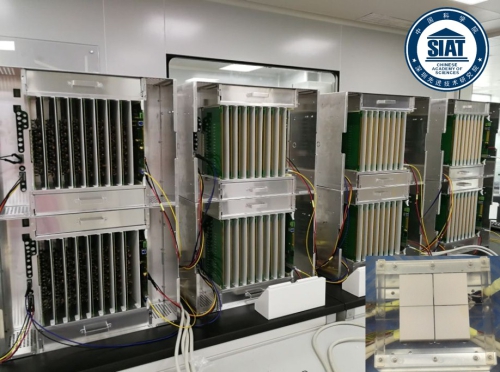A Portable Multi-scale Ultrasound System for Non-invasive Ultrasonic Neuro-stimulation
Date:06-12-2017 | 【Print】 【close】
New progress has been made in the development of multi-scale ultrasound neuromodulation systems in Shenzhen Institute of Advanced Technology, Chinese Academy of Sciences (hereinafter referred to as SIAT). The paper entitled “A Portable Ultrasound System for Non-Invasive Ultrasonic Neuro-Stimulation” has been published in IEEE Transactions on Neural Systems and Rehabilitation Engineering.
The work was achieved by the ultrasound group led by Prof ZHENG Hairong in SIAT. Shortly after, Nature reported this work in a review paper entitled "Ultrasound for the Brain"
Recent researches have shown that ultrasound has the ability to modulate neural activity in a non-invasive manner. By transmitting acoustic waveforms into brain tissue, ultrasound is able to non-invasively and remotely stimulate the neurons by activating voltage-gated sodium channels. The ultrasound induced changes in neuronal activity are sufficient to trigger synaptic transmission in intact brain circuits. Ultrasound has also been demonstrated for the stimulation of retina. The inter-neurons beyond photoreceptors were activated to potentially restore some sense of vision. The most recent researches on human brain presented that the ultrasound could enhance the performance on sensory discrimination without affecting task attention or response bias. The sonication elicited transient tactile sensations on the hand area contralateral to the sonicated hemisphere. Therefore, ultrasound has been demonstrated for different scales of neuro-stimulation from single neuron to human brain, which offers a powerful tool for remotely modulating neural activity with non-invasive feature.
Ultrasound research team in SIAT has developed a portable ultrasound system specifically for ultrasound neuromodulation applications. The ultrasound physical parameters including the operating mode, frequency, pulse repetition frequency, intensity and pulse duration are adjustable in a friendly manner. The newly developed system supports the synchronization of input and output to facilitate with other neurophysiological devices such as MEA, or patch clamp. The new ultrasound neuro-modulation equipment has already been used for the modulation of small animal and non-human primates.
At the same time, the research team has developed several new devices and systems for multi-scale ultrasound neuromodulation applications including researches with neuron, small animal, and non-human primate. Moreover, 2048 elements MRI-compatible ultrasound transducer and system have also been developed, which provide the basis for multi-point dynamic deep brain stimulation. At present, the developed ultrasound neuromodulation techniques and equipment in SIAT have been successfully applied in several renowned neuroscience laboratories include Zhejiang University, Tsinghua University, Shanghai Jiaotong University, Hong Kong Polytechnic University, University of Southern California, Kunming Institute of Zoology, Shanghai Institute of Neurology and Psychology, Chinese Academy of Sciences etc. The developed ultrasound systems play a key role in the study of key technologies such as the non-invasive neuro-modulation and sonogenetics.
The research work has been supported by the National Key Scientific Research Instrument Development Project, National Natural Science Foundation of China.

Figure 1. (a-b) Micro-scale ultrasound stimulation chip and (c) A portable ultrasound neurostimulation system. (Image by SIAT)

Figure 2. Large scale (Thousands of channels) ultrasound transducer and system specifically for ultrasound neuromodulation. (Image by SIAT)
Tel: 86-755-86392284